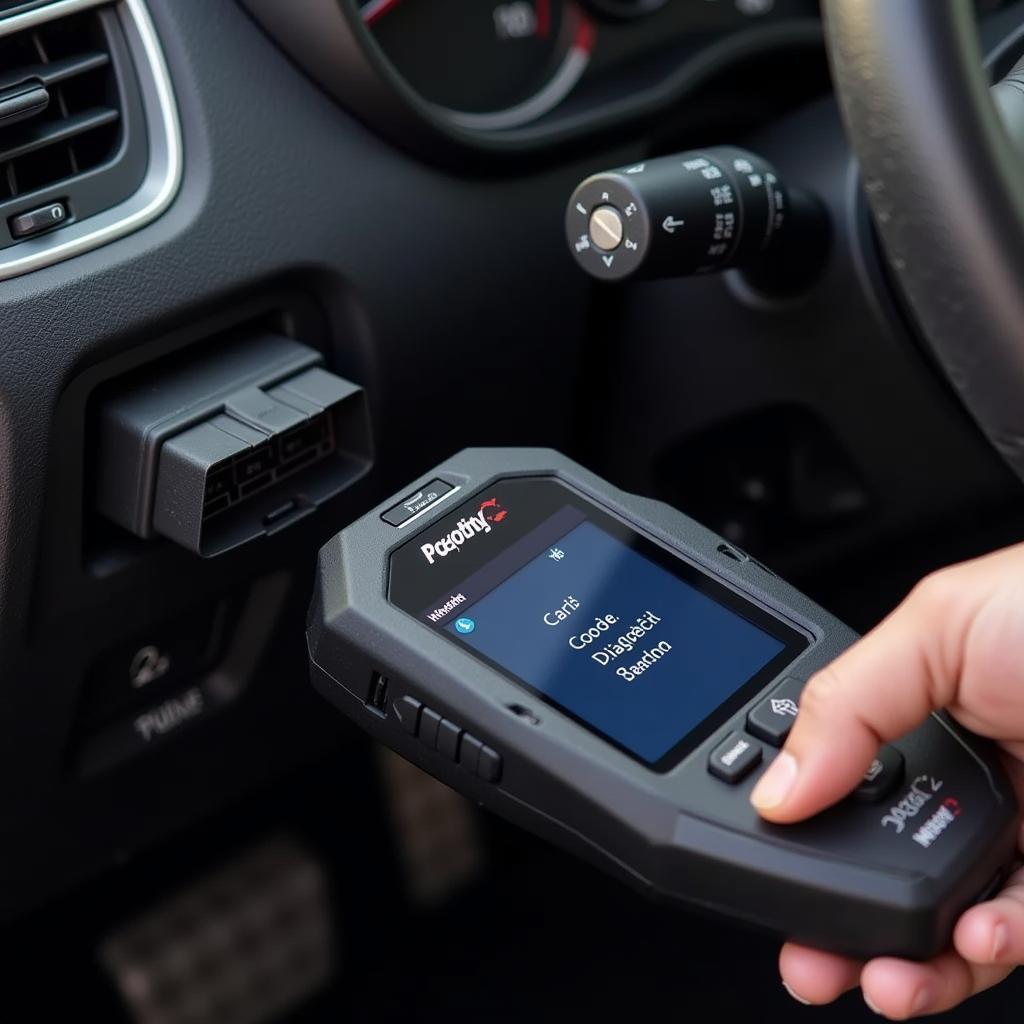Understanding and fixing OBD2 codes can seem daunting, but it’s much easier than you might think. This guide will walk you through everything you need to know, from understanding what OBD2 codes mean to using a scanner to diagnose and fix car problems.
What Does “Fix OBD2” Mean?
When your car’s computer detects a problem, it generates an OBD2 code. “Fixing OBD2” refers to the process of identifying the issue behind the code and taking the necessary steps to resolve it. This involves using an OBD2 scanner to read the code, understanding its meaning, and then performing the appropriate repairs.
The Importance of Understanding OBD2 Codes
OBD2 codes are essentially your car’s way of telling you something is wrong. Ignoring them can lead to more severe problems and costly repairs down the line. By understanding these codes, you can address issues early on, saving yourself time, money, and potential headaches.
How to Fix OBD2 Codes: A Step-by-Step Guide
-
Read the Code: Connect your OBD2 scanner to your car’s OBD2 port, usually located under the dashboard on the driver’s side. Turn the ignition on, but don’t start the engine. The scanner will read the codes stored in your car’s computer.
-
Interpret the Code: OBD2 codes consist of a letter and four numbers. The letter indicates the system affected (e.g., “P” for Powertrain), while the numbers specify the specific issue. Use a reliable online resource or an OBD2 code reader with built-in definitions to understand the code’s meaning.
-
Research the Code: Once you understand the code’s meaning, research the potential causes. Several online forums and automotive websites offer detailed information about specific OBD2 codes and their common solutions.
-
Diagnose the Issue: Based on your research, visually inspect the relevant components and systems in your car. Check for loose connections, damaged wires, or worn-out parts. Use a multimeter or other diagnostic tools if necessary.
-
Perform the Repair: If you’re comfortable with car repairs, you can attempt to fix the issue yourself. Follow the recommended repair procedures outlined in your car’s repair manual or reliable online sources. If the repair seems too complex, take your car to a qualified mechanic.
-
Clear the Code: After completing the repair, use your OBD2 scanner to clear the code from your car’s computer. This ensures the check engine light turns off and the computer can properly monitor the system for future problems.
Common OBD2 Codes and How to Fix Them
Here are a few examples of common OBD2 codes and their potential solutions:
-
P0420 (Catalyst System Efficiency Below Threshold): This code indicates a problem with your car’s catalytic converter. Common causes include a faulty oxygen sensor, a leaking exhaust system, or a damaged catalytic converter.
-
P0300 (Random/Multiple Cylinder Misfire Detected): This code suggests your engine is misfiring. Potential culprits include worn-out spark plugs, faulty ignition coils, vacuum leaks, or fuel system issues.
-
P0171 (System Too Lean (Bank 1)): This code signals that your engine is running lean, meaning it’s getting too much air or not enough fuel. Possible causes include a vacuum leak, a faulty mass airflow sensor, or a dirty fuel injector.
When to Seek Professional Help
While some OBD2 codes indicate simple fixes, others can be more complex and require specialized knowledge and tools. If you’re unsure about diagnosing or repairing the issue yourself, it’s always best to consult a qualified mechanic. Don’t hesitate to seek professional help, especially if:
- The code reappears after clearing it.
- You’re experiencing other symptoms alongside the check engine light.
- The repair requires specialized tools or expertise.
Conclusion
Fixing OBD2 codes doesn’t have to be a mystery. With the right information, tools, and a little effort, you can diagnose and fix many car problems yourself. Remember to always prioritize safety and consult a qualified mechanic when in doubt.
If you need assistance with your OBD2 scanner or have any questions, our dedicated customer support team is available 24/7 via WhatsApp: +1(641)206-8880 or Email: [email protected]. We’re here to help you keep your car running smoothly.


